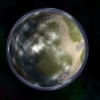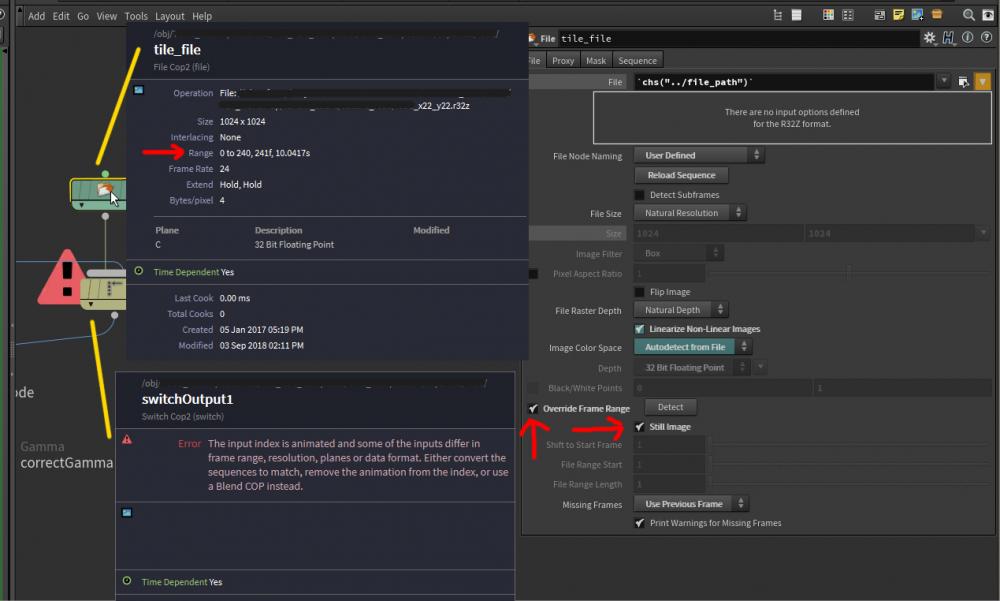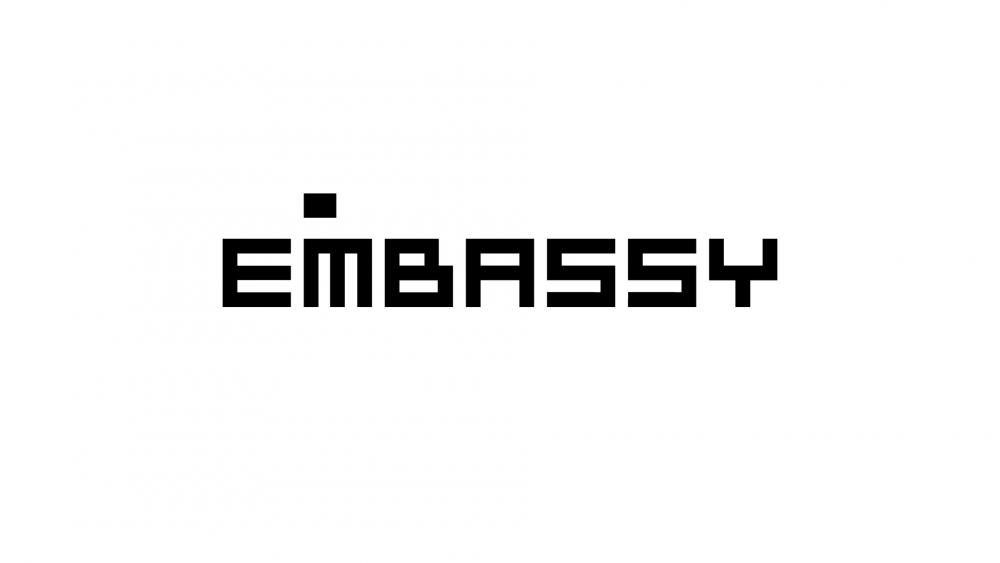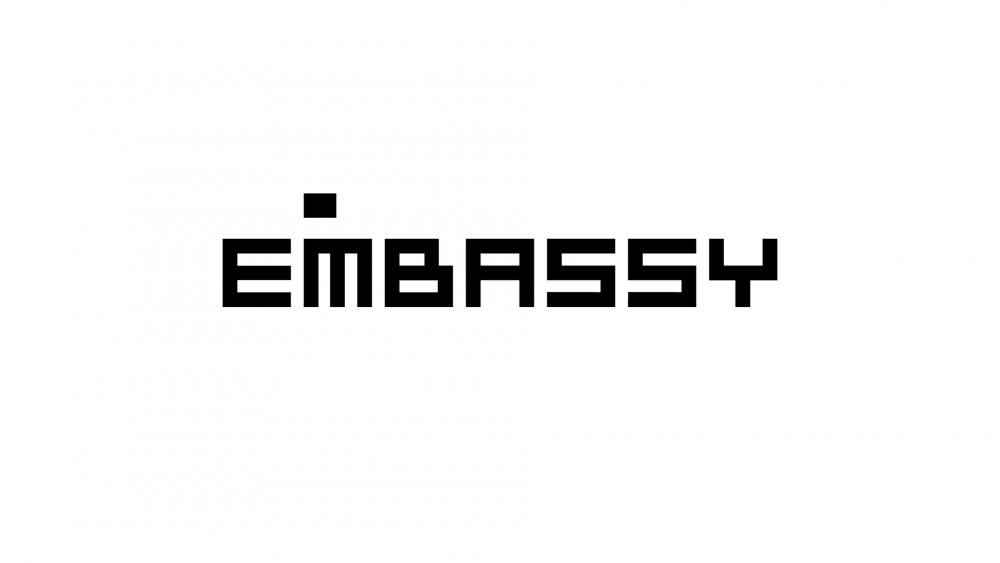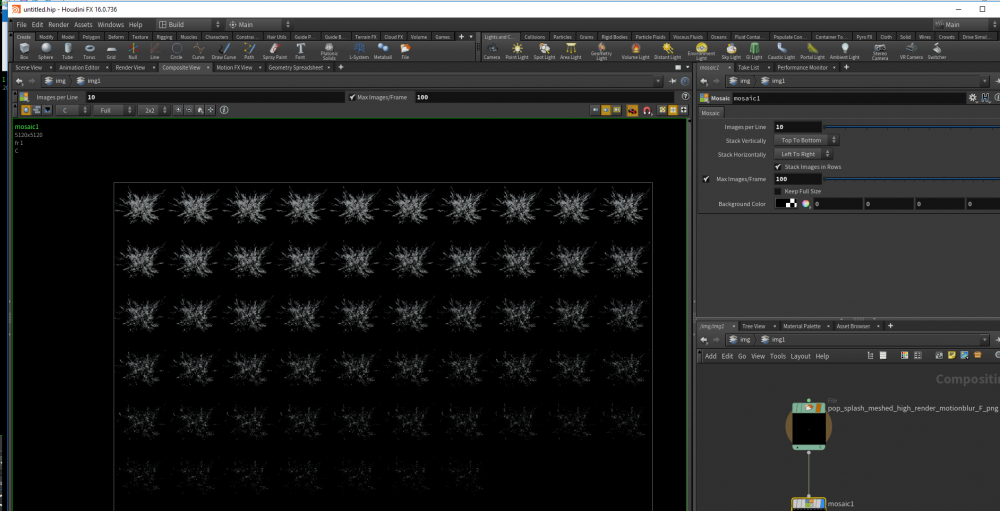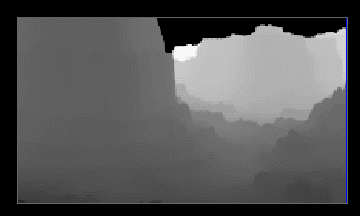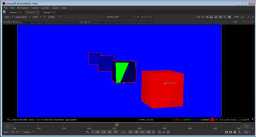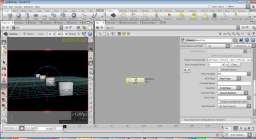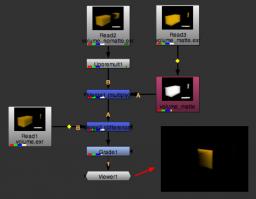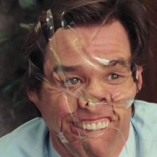Search the Community
Showing results for tags 'compositing'.
-
Senior Compositor We are producing 5 hours long web series, integrating live shoot with 3d virtual production. Our film division consists of researchers and artists. We are looking for a competent and passionate composition trainer and consultant to: Train our team in NUKE Remain engaged with our researchers and artists team to trouble shoot as and when problems are faced Execute scenes by bringing your experience to enhance our film user experience Duration: To be determined together Location: Remote Working with Physical intervention - Bangalore, India (last stage of project) Reach out at careers@nvlife.net ABOUT US We are a deep research-based health and wellbeing organization that has been converging ancient wisdom and science to bring out solutions to reverse any form of suffering humanity faces. Our research led us to write the book and that led us to start online courseware during the pandemic. In the process, we produced more than 10,000 hours of content and continue to create more. From being researchers, writers and teachers, we have recently diversified into storytellers- the result of which is a brand-new production house that creates content that connects humanity with its lost wisdom. In a world that is consumed with AI, we are the only organization that specializes in creating an artist. In the last one year of production, we have hired individuals and helped them evolve into artists by using the unique techniques developed at Curedemy. For two years we have researched the concept of sleep, hence, decoding the mysteries of sleep, dreams, nightmares and regeneration. We are in the production phase of taking it to the big screen. The medium of development of the current web series is Unreal, Houdini, Blender and Nuke. We solve problems. We classify all human problems into three categories. We call them suffering. 1. Distress- Emotional body issues 2. Mental Disorder- Mental body issues 3. Disease- Physical body issues For our transformative journey from researchers to storytellers, we are expanding and looking for an ecosystem of artists who can transform our vision into a visual and audio appealing story in a simple manner while it reveals the deepest of the secrets that trouble humanity on a daily basis.
-
- nuke
- compositor
-
(and 1 more)
Tagged with:
-
We are producing 5 hours long web series, integrating live shoot with 3d virtual production. Our film division consists of researchers and artists. We are looking for a competent and passionate composition trainer and consultant to: Train our team in NUKE Remain engaged with our researchers and artists team to trouble shoot as and when problems are faced. Guide us by bringing your experience to enhance our film user experience. Duration: To be determined together Location: Remote training and open for visiting (Bangalore, India) if required Reach Out at lipika.jain@nvlife.net ABOUT US We solve problems. We classify all human problems into three categories. We call them suffering. 1. Distress- Emotional body issues 2. Mental Disorder- Mental body issues 3. Disease- Physical body issues We are a 12-year-old deep research-based organization that has been converging ancient wisdom and science to bring out solutions to reverse any form of suffering humanity faces. Our research led us to write the book and that led us to start online courseware during the pandemic. In the process, we produced more than 10,000 hours of content and continue to create more. We are now moving up from being researchers, writers, teachers to storytellers where we are producing films and web series based on our content to reach every household as per our vision. For our transformative journey from researchers to storytellers, we are expanding and looking for an ecosystem of artists who can transform our vision into a visual and audio appealing story in a simple manner while it reveals the deepest of the secrets that trouble humanity on a daily basis.
-
El Ranchito is currently looking for a qualified Compositing TD to join us as soon as possible. Location: Madrid or Barcelona, preferably in-house. Primary responsibilities: · Support the Compositing Department. Work with the creative team to ensure shots can be delivered to the very highest standard. · Work closely with the Compositing Supervisors to develop Nuke templates, gizmos and tools to meet the project requirements. · Work with the RnD Department to help integrate the Compositing tools in the company pipeline. · Create and maintain documentation for the Compositing Department tools and workflows. · Work with the HOD and other departments' TDs (CG, FX, DMP, Editorial...) to create and maintain tools and procedures that improve the company's workflow. Requirements: · Proficient in Python 2/3. · Strong Nuke knowledge. Experience as a compositor is a plus. · Good understanding of the entire VFX pipeline from shooting to lighting and rendering, compositing, editorial, and DI. · Experience working with Nuke and Hiero APIs. · Experience with Windows OS. · Experience working with Shotgun and RV APIs is a plus. · Experience with source control systems such as Git or SVN is a plus. · Experience with Deadline Render Manager is a plus. · C++ Knowledge is a plus. · Fluent Spanish and English language skills, spoken and in writing · Eligible to work in Spain If you are interested, please fill up the recruiting questionnaire that you can find in our website and select “Apply for / Other / Compositing TD”. You can also send us your CV, link to your demoreel, availability and salary expectations to: cv@elranchito.es. Looking forward to meeting you!
-
El Ranchito is currently looking for a qualified VFX Nuke Compositing Teacher (Nuke) to join us as soon as possible in order to create and teach vfx courses to our team. Description: The VFX Compositing Teacher will create, distribute and teach vfx courses to our artistic team. This person will collaborate with the Human Resources department on the creation of a training department at El Ranchito. This person will also collaborate with the Heads of each departments to create the content of the courses depending on the needs of our team. Duties and Responsibilities: Preparing course outline and monitoring and mentoring students. Adjusting the courses to suit the needs of our team. Set your own hours while you help students learn the subjects you love to teach. Qualifications: Excellent knowledge of Nuke. The ability to teach and manage course content. Deep knowledge of VFX compositing theory: Compositing Pipeline, Colour Spaces, Keying, Lighting, 3d Integration, QC, Rotoscoping.The ideal candidate should have deep understanding of vfx production workflows. Prove professional experience in teaching 2D and professional relationship with VFX and/or Animation companies. Excellent communication skills and ability to creating learning materials. Experience in production of VFX and meeting schedules. Strong understanding of the vfx pipeline. Python scripting knowledge is a plus. Fluent Spanish OR English language skills, spoken and written. Eligible to work in Spain. If you are interested, fill up the recruiting questionnaire, please select Apply for / VFX Compositing teacher”: https://www.elranchito.es/recruitment-2/vfx-compositing-teacher/
-
Hi there, I have gone through the forum and I could not find a solution to this problem, so please forgive me if it exists. The sad part is I totally figured this out months ago through trial and error and never saved the file somewhere that I could revisit it apparently ( silly me ! ). So I have made some flat tapered grids that represent disco lights ( light cones but flat ) and have coloured and animated them rotating with sin() and added a camera. Because this is for a 2D style project, there is no shading or lights required. The shader is literally just the Cd attribute plugged into emission with random colours per prim. What I would like to do is use COPS to render my scene as it's way faster to do this for something that has no real lighting. I just cannot figure out how to get : 1) the same view as the camera, but in cops 2) the colour information to show up. It's always cops that trips me up. lol. Any help is greatly appreciated.
-
I am trying to render out a simple wireframe with depth i.e. the wireframe object fades into the background. Ideally, I want to control the fading threshold in compositing software but I don't have Nuke which is what most tutorials out there are using. Relatively new to render passes, wrote Z depth output into EXR but it is recorded in world units I believe so I find it hard controlling it. I tried using a COP network but can't seem to make it work/don't know how to remap Z depth mask. Any advice on that? Attached file. On a higher level, what is a good option to use for editing multilayer EXR sequences? I typically use Premiere for simple editing but there aren't many EXR tutorials for it? After Effects seems convoluted. Is Nuke my only good option? z-depth-test.hipnc
-
UPP Advertising (www.upp.cz/advertising) is currently looking for skilled Nuke Compositors for a short-term period, starting next week (15.3. – 21.5.)! Join our amazing team on several interesting projects and maybe it will be a great start for longer cooperation. Remote work available. More info / To apply send an email to martina.sramkova@upp.cz
-
- advertising
- hiring
-
(and 3 more)
Tagged with:
-
Hello, This is more of a question of curiosity at the moment. Although compositing is usually done after rendering multiple passes, how would one go about if one wanted to composite more procedurally at render time, using shaders? Sort of bringing the compositing phase into the SOP/MAT context. I do not mean grabbing a pre-existing image from disc or creating something procedurally and then combining them in a shader with layering or the Composite VOP, I mean making the same calculations, but on the pixels that would be rendered if the object weren't there, something like transmission and ray-bending calculations on glass like surfaces. Basically I'm talking about getting "what would be rendered if the object weren't there" information into the shading context as a possible layer to be made calculations on, blended with, etc. Would there be a specific VOP, something I haven't encountered yet? This could provide some interesting possibilities, I think, for example the option of controlling blending modes at SOP context with attributes more intuitively without having to promote some attributes to shaders, render them as separate passes, and then try to do procedural operations on them in COPs or some compositing application. A more specific example would be a lot of grids, pointed towards the camera, moving around in world or object space, and having materials applied to them that dictate, based on geometry attributes, weather whatever is used as their surface color or texture, would be "overlayed" over everything in the 3D space behind it, added to it, multiplied, used in a difference or subtract calculation, or something else. I hope I communicated clearly enough. Anyone tackled this?
-
- rendering
- compositing
-
(and 1 more)
Tagged with:
-
Hi everyone I am battling to remove a strange artifact showing of a dark dot and sometimes a dark line when compositing the emission layer in Adobe after effects and Davinci Resolve I have attached the simplified houdini file with the sky texture and its ready to render to see where the problem is So, I render the following AOVs from Houdini 18.0.532 using the latest redshift 3.0.27 I render the following aovs as exr: beauty_aux.exr diffuse.exr emission.exr gi.exr reflection.exr refraction.exr specular.exr z.exr The sky image is an exr which I applied on a redshift dome light inside houdini I follow the guideline on how to composite all these aovs into a final image in Adobe After Effects and Davinci Resolve and i place the layers in the following order: diffuse, + gi + specular + reflection + refraction + emission The emission aov ends up showing a dark spot especially arounnd the area where the sub is at its brightest sometimes it even shows an entire dark line again around the area in the image where the sun is supposed to be at its brightest this artifact only appears when I switch my project setting to run on 32bit per channel and even when i try to load the beauty aov exr, i get the same dark spot so this issue is not just limited to the emission aov Then moment i switch the project to run on 8bit per channel, the dark dot and dark line artifacts dissapear but then in Adobe after effects, i end up losing the ability to bring back the sky colour and details, the image ends up looking flat and even when i adjust the curves on the colours, the image remains flat looking Thank you __Sky_Artifact.rar render.zip
-
Not available
-
Hi there everyone, Hope you are well. So I have been getting some advice from Industry Professionals about building a reel and I have been watching a lot of Houdini industry live streams and a they all say the same thing, CG with plates or tracking your shot. Now I am very new to the FX side of things and I am progressing well with Houdini but I am not sure how things work on the Comp side other than the basic channel manipulation in Nuke and separating out your render layers in an exr file but anyways. There are going to be a lot of questions coming up, I just want to really understand how things work. So I know with tracking you place little markers on the ground (I.E a piece of paper with an X on it lets say) and then you can track that with a Software. Now what I want to know is what is the difference between Tracking and 3D tracking or is it the same thing ? With Plates, is it just taking a picture of something, Cleaning it up in comp and comping in your CG element or is there tracking involved as well ? I know there is things like lighting involved which you can match by eye I guess but is there a good way to do lighting ? Another question is what are good softwares for tracking or Plates ? I know there is after effects but I have also heard of Boujou and Syntheys or something. Any advice would be really helpful. Thank you in advance and have a great day. Jody.
- 2 replies
-
- compositing
- 3d tracking
-
(and 2 more)
Tagged with:
-
Hey ODforce! I recently published the next installment of the Houdini For The New Artist series. This course is all about making Houdini easier to learn, and you can watch the first chapter for free! Here's the link: http://bit.ly/2okYpY4 Some of the main topics include: Chapter 1: How to understand and set up DOP networks Using SOP attributes with the dynamic context Forces Particles Life & Variance How to use groups Rendering Particles Sub-steps, Sub-frames, & Time-Steps Caching Sub-steps & Practical Applicaitons Chapter 2: Texturing & Lighting Techniques How to Integrate a Substance Painter Workflow with Houdini Spot Lights, Area Lights, & Artistic Considerations When Placing Key Lights Utilizing Light Attenuation Gobos Aim Constraints, Near-attenuation Techniques for Reading & Emphasizing Form While Lighting How to Make Light Blockers Shadow Masking Techniques for Controlling Light Placement Component-based Lighting Light Linking Chapter 3: HDAs, Velocity, Normals, and & VOPs What is an HDA? How do you make one? Data Types & Adding user Parameters Booleans, Switch Nodes, & Parameter Behaviors Additional HDA Modifications What is Velocity? What are Normals? An Introduction to the Point Wrangle Introduction to VOPs How to Blend Materials Basic Noise Parameters Additional VOP Techniques Chapter 4: Geometry Types, Animation, & CHOPs Geometry Types & Attributes Introduction to Volumes Animation Basics Channel Groups, Animation Layers, & Motion Trails Introduction to CHOPs Curve Constraints, CHOPS with DOPs, & Additional Settings Chapter 5: Rendering & Compositing Introduction to Multi-pass Compositing Rendering Concepts How to Use Takes Rendering Multiple Jobs De-noising passes Compositing Basics with Houdini Thanks for watching! - Tyler
-
Hey all, Any compositing wizards in the house? We were curious if any of you have a possible work around for the following problem that does not involve using the take system. (or leaving all nodes unlocked) Currently trying to updating some of our pipeline in compositing, but I seem to be running in all kinds of issues regarding Houdini's "Hardcoded-ness" in regards to $F Our file structure follows a 2d structure (filename_X_Y) rather than linear (filename_$F) and I get the feeling Houdini really dislikes that. (at least in the compositing context) So on the top level (from the SOP context) we have some logic to remap a linear number into this 2d structure (see tiles image), which works fine when this iteration number is set by hand. For reference, this 2d structure can be placed anywhere in our tile space, and can be a sparse set of tiles. But replacing this iteration number by "$F" seems to break a lot of stuff, as if Houdini suddenly engages all kinds of safety mechanisms that are in to way relevant to what we are trying to do. One of the things that breaks are all the switch nodes (they check if the input files exist and load a backup image if not, see image below) so to work around this I need to match all resolutions, file formats and file ranges apparently. But setting the file as a still image also doesn't work when the filename is indirectly built using $F. And manually setting the frame ranges also doesn't seem to work as we are not inputting a "true sequence" of files, again because of the 2d structure we are using. So it will report most things as empty frames, or it loads the wrong files altogether. Did any of you try anything similar? Did you run into the same problems and if so was there any work around you could use? Thanks a lot! Twan
-
The Embassy VFX is a Canadian, Oscar-nominated production house, specializing in live-action production, post-production, and animation for feature films & commercials. We are currently looking for a Senior Compositor to join our team for work on upcoming feature, television and commercial work. We require someone who is able to work in a fast-paced environment to deliver an extremely high level of work. Please note: At this time we are accepting applications only from those artists who are legally eligible to work in Canada (ie Canadian citizen, permanent resident, or currently hold a work permit). Click here to apply: https://the-embassy-vfx-inc.hiringthing.com/job/25436/senior-compositor-contract-position Principle Duties & Responsibilities Establish certain looks and/or solve particular design or effects challenges for key visual effects shots Full shot compositing including paint and roto when required Working within studio best practices, follow guidelines, and keep scenes clean and organized Prioritize and revise work based on direction from supervisors Meet project milestones and deadlines on time Education, Experience, and Skills Required Strong knowledge of compositing workflow and other major aspects of post-production Possess a keen eye for colour and colour matching Ideal candidate will have 7+ years industry experience in commercials, film or TV Strong understanding of multiple aspects of the VFX pipeline Be comfortable working with clients Excellent communication skills We Offer Competitive salary based on experience A fun and collaborative environment Emphasis on work/life balance Ample cross-training opportunities Dog-friendly workplace
-
- 2d
- compositing
-
(and 2 more)
Tagged with:
-
The Embassy VFX is a Canadian, Oscar-nominated production house, specializing in live-action production, post-production, and animation for feature films & commercials. If you have an advanced knowledge of Nuke and other compositing software, a creative eye and an insight into emerging technology, please read on. We require someone who is able to work autonomously in a fast paced environment to deliver an extremely high level of work. You should be comfortable working with clients, have a keen eye for detail, excellent communication skills and technical knowledge and also have relevant experience in a film or TV environment. We are ideally looking for someone who can provide creative direction and has the experience of leading a team through all phases of production. Reels must be accompanied with a detailed shot breakdown. Please note: At this time we are considering applications only from those artists who are legally eligible to work in Canada (ie Canadian citizen, permanent resident, or currently hold a work permit). Click here to apply: https://the-embassy-vfx-inc.hiringthing.com/job/41208/compositing-supervisor Principle Duties and Responsibilities Establish certain looks or solves particular design or effects challenges for the show Collaborate with your team to share knowledge and techniques Solve technical challenges and recognizes areas for improvement Pitching and quoting for new work with the production team Liaise with production team to assign shots, monitor throughput and schedule deliveries Attend shoots and assist vfx supervisors with their duties Oversee recruiting, mentoring and training of artists in your teams Supervise quality control on all shots leaving the facility Composite shots when required Set up and manage the color pipeline for each show Education, Experience, and Skills Required Minimum 10+ years photoreal visual effects compositing experience in film, TV or commercials At least 2+ years experience in a leadership or supervisory role Expert with Nuke. Knowledge of other compositing, finishing & editorial tools an asset Experience in a Linux & OSX environment Should possess a keen eye for color and color matching Should have strong knowledge of compositing workflow and other major aspects of post production Understanding of film & video broadcast standards and video & graphics formats Understanding of the technical aspects of pipeline development e.g. python, gizmo’s etc. Good understanding of editorial and color files and formats e.g. EDL, XML AAF, CDL, BLG etc. Outstanding organizational skills and the ability to multitask Ability to take direction positively, lead a team and thrive under the pressure of tight deadlines Committed to maintaining our client base Team oriented, and able to inspire a collaborative working environment and above all … have a great sense of humour! We Offer Competitive salary based on experience Ample cross-training opportunities A fun and collaborative environment Emphasis on work/life balance Dog-friendly workplace
-
- compositing
- 2d
-
(and 1 more)
Tagged with:
-
Hi guys, I'm using the mosaic node in COPS to create texture atlas's for games. All renders from Houdini seem to work fine using the mosaic node. However often I use aftereffects/other software to add extra motion blur etc to my renders - save them back out as exr's or png's and then take into Houdini COPS to put together the texture atlas - However I keep running into the same issue which is; The mosaic node incorrectly interpolates my images. For example I may have 120frames - set the images per line to 10 and max images to 100 - so it should show the first 100 frames right? not in my case it seems to start the atlas from a random frame and not always show all the sequence REGARDLESS of mosaic node or preference settings with tile size etc. Someone suggested it may be memory contrsaints due to the huge size of the mosaic it creates but to me that shouldn't affect it interpolating the image sequence in the correct order and knowing which is the first and last frame - I would attatch a scene file but that would require me providing a render which I currently an unable to do but will try and get one that I cant get to work uploaded for others to try. - (See below I have attached a screenshot of the exact issue - the input sequence contains 156 frames) Any ideas would be great as this is really annoying and rather confusing - My only thought is naming conventions and the mosaic node needs or wants a constant frame number with the same amount of digits - 001 through to 100 etc. - Just tested this theory and no changes so it cant be that, unless Houdini just hates non Houdini renders or file types
- 4 replies
-
- houdini
- compositing
-
(and 2 more)
Tagged with:
-
The Embassy is a Canadian, Oscar-nominated production house, specializing in live-action production, post-production, and animation for feature films & commercials. We are currently looking for a Senior Compositor to join our team for work on upcoming feature, television and commercial work. We require someone who is able to work in a fast-paced environment to deliver an extremely high level of work. Please note: at this time we are accepting applications only from those artists who are legally eligible to work in Canada (ie Canadian citizen, permanent resident, or currently hold a work permit). Click here to apply: https://the-embassy-vfx-inc.hiringthing.com/job/25436/senior-compositor-contract-position Duties Establish certain looks and/or solve particular design or effects challenges for key visual effects shots Full shot compositing including paint and roto when required Working within studio best practices, follow guidelines, and keep scenes clean and organized Prioritize and revise work based on direction from supervisors Meet project milestones and deadlines on time. Requirements Strong knowledge of compositing workflow and other major aspects of post-production Possess a keen eye for colour and colour matching Ideal candidate will have 7+ years industry experience in commercials, film or TV Strong understanding of multiple aspects of the VFX pipeline Be comfortable working with clients Excellent communication skills We offer Competitive salary based on experience A fun and collaborative environment Emphasis on work/life balance Ample cross-training opportunities Dog-friendly workplace
-
- compositing
- television
-
(and 2 more)
Tagged with:
-
Hi, I'm just wondering if anyone else is experiencing weird behavior in COPs where some frames tend to drop? (shows up as black) And some frames even shows up as some sort of random lines. Resulting on my final render to have random flickers due to incomplete passes. This is a capture of me scrubbing the timeline.. I'm using a VOP Cop filter that simply copies the Pz channel to R G and B: I couldn't figure out a proper repo yet as it is occurring quite randomly. Sometimes, after a fresh scene, it would exhibit the dropping.. sometimes it won't. I'm thinking that it is related to how COPs handles the image cache.. so I tried clearing/refreshing them with these methods: Reload the File SOP. Cleared the Compositing Cache from Edit menu. Cleared the Cache from the Houdini Preferences Window. Also Increased Cache Sizes. (Restarted Houdini) Used python to clear out more cached elements: hou.hscript("glcache -c") print("Cleared GL Cache") hou.hscript("texcache -c") print("Cleared Texture Cache") hou.hscript("compfree -c") print("Freed Comp Cache") I also noticed that it seems to be related to multi-channel EXR/PIC files. I almost gave up on the scene that I'm working on and was about to jump to Natron. But as a last ditch effort, I tried just rendering my scene as separate sequences per pass. (RGB, A, Z, Normal, etc..) Finally when I rendered the comp, I got no dropped frames. As soon as I can track down a repo step, I'll send an RFE to sidefx. Do you guys encounter similar problems when using COPs?
-
Hi guys, i have a small problem in comp . As you can see when i did the comp in houdini 15 we can see the shadow of the box through the box . I mean the box is transparent and i don't know why. Could you please help me? Thanks
-
Hi, I am facing a weird issue when i am trying to comp my z depth from file rendered from Houdini in Nuke. I am getting weird red edges even if its not in focus that blurs it. Also blur is so weird. I know for sure its not the problem of Nuke because z defocus node is working well with another exr I downloaded over internet. I don't know what I am missing. Any pointer will be very helpful. Thanks
-
Hi! I've got a scene with a box and a volume. I am trying to split the rendering of each object into a different pass. In the `/out` network from the attached scene, the `composite_premult_matte` node regroups a first setup of render nodes, each rendering a specific object while setting the other(s) as “forced matte”. When adding the resulting passes in compositing, I get back the beauty as expected. Now I've set up `composite_extracted_matte` which this time extracts the mattes into the alpha layer of different files. For each “nomatte” render pass, the object(s) not to be rendered are set to “phantom”. When compositing the whole in Nuke, I don't get the same result as the beauty. I tracked it down to this Nuke's graph below, where post-multiplying the matte of the volume doesn't seem to match with the pre-multiplied version: `volume_nomatte x volume_matte != volume`. Note that this issue seems to happen only when dealing with volumes (transparent?) objects. Is there something that I'm missing within my rendering setup? Cheers! composite_volume.hipnc
-
I wanna do some slap comps without using nuke, I need shuffle some channels to create the comp. there is a node like shuffle in houdini? Thanks
-
Normally all the effects I've made I've had geometry provided to me/modeled it myself. What I'm wondering now how to make it interact with the plate as well/render passes I can give my comper to deform the plate. For example a dust hit. Obviously, there is dirt involved, so I guess my question is how would I go about making this within Houdini? It's the kind of "dirt" you would have for a soccer field. I've applied a vopsop with a turbulent displacement for some jagged/rocky type looks and added some interior detail to my vornoi but I guess I'm wondering what the next step would be or possibly something I may be overlooking? I've also tried adding subtle fur aswell for some grass. It's a slow motion shot/dust hit action sequence so I want to really nail the overall look. Thanks guys!
-
Hi all, first of all, I'd like to say I'm new to this website, and have only been working on Houdini for about four months. I really like the interface, and I'd say I've made some pretty 'okay' stuff for a beginner. But now, I'd kind of like to take a step up and begin putting my work into real videos. I've looked at the composite view tab, but as far as I can tell, it only handles images. Would I have to export it to an external program and then insert my video? Or is Houdini even capable of this? Also, as of right now, my only sources for tutorials are youtube (hardly any) and the Houdini Tutorial Archive over at papicrunch, which is getting more and more limited. I'm not so sure I'm ready to move on to Houdini Papers yet, as I'm mainly a visual/tactile learner, but I did a Voronoi destruction scene based on a paper. I would really enjoy if you could point me towards some more beginner/moderate tutorials that are preferably videos. Thanks!
- 4 replies
-
- Question
- compositing
-
(and 2 more)
Tagged with:





.thumb.png.2a1a64567c712ed2af560b69a299f02e.png)
_LI.thumb.jpg.570b0a93a39ef9db97dfdeee1e728417.jpg)
_LI.thumb.jpg.4a79388a51f6061bdcc6764b26a6a3f1.jpg)
.thumb.png.709a063e0032b2ab32e9e0e3a2b2e621.png)
_LI.thumb.jpg.2d9dab1018e26a8fa24838c5f0195401.jpg)
.thumb.png.6ea53a2b7c4f48ab1dd286cebde510ad.png)
.thumb.png.bb264d98e72dfc4e64c761e36050e662.png)
_LI.thumb.jpg.5c11772ee6c88459056d98079ecae8f8.jpg)
.thumb.png.4fd7282e32bae3f88b7e569c3f6944af.png)
.thumb.png.f693ac8d7a5c51b4afe36cfa69549aec.png)
_LI.thumb.jpg.6069ea8ce2530b03c954a3864c667dcd.jpg)
.thumb.png.ba1a21523d6c20d15ff333d4e1ee843d.png)
.thumb.png.23740c348bbd1b7da2a31950bb2fea6d.png)
_LI.thumb.jpg.18b36599f03bcc397adfd9ed81780f1f.jpg)

